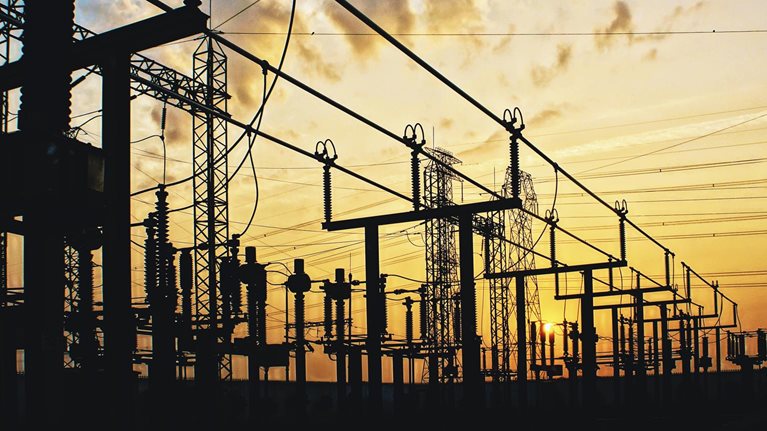Over the past year, events such as the rolling blackouts in Texas and cold-weather demand surges across Western Europe show that the effects of extreme weather and events caused by climate change pose imminent threats to electric grids.1 Grids often go down when people need them most, whether during polar vortices, once-in-a-century storms, extreme temperature changes, or wildfires. As a result, grid operators across the world face the urgent task of weatherizing energy-transmission and distribution systems.
Improving the stability of today’s electric grids requires careful planning by stakeholders across the value chain. Regulations related to resilience are changing to meet new and evolving challenges. Therefore, chief technical officers (CTOs) and asset managers of both transmission-system operators (TSOs) and distribution-system operators (DSOs) are responding with plans of their own, optimally taking structured, methodological approaches to implementing resilience strategies.
That said, many operators lack accurate ways of measuring and quantifying the risk of extreme weather events. Our research shows that climate risk and resilience modeling can provide operators with the necessary information to make the right calls at the right moments in time. This article provides a five-step methodology to model climate-change resilience. Doing so can help grid operators, OEMs, utilities, and regulators steer the ship during the storm, ensuring that customers aren’t left in the dark.
The effects of climate change on the electric grid: A growing problem
A recent McKinsey study shows that adapting to climate change is critical to avoid significant physical and socioeconomic hazards.2 Even so, extreme weather events have already had an impact on the activities and services of electric-grid operators and the economy as a whole. The examples keep coming: in 2017, more than 3.6 gigawatts of power in the United States was at risk during Hurricane Harvey.3 One year later, Italy’s Storm Vaia caused more than €2.8 billion in economic losses.4 And in February 2020, during Germany’s Storm Sabine (“Ciara” to the rest of the world), wind power made up 60 percent of the country’s electricity generation; during the storm, strong gusts of wind caused the wind turbines to switch off, creating considerable stress on grid stability.5
Over the past few decades, changes in climate and concomitant extreme weather events have increased in frequency. Such events can directly affect power grids in ways that are often difficult to predict and respond to. Floodwaters can damage underground transformers, and powerful storms can cause utility poles to buckle or trees to fall onto power lines. Recent rolling blackouts in Texas were caused by frozen instruments. Similarly, extreme cold weather in Western Europe caused frequency deviations that could have damaged the entire European network. Events of this magnitude result not only in significant costs for operators but also in quality issues for consumers and even interruptions to industrial sites and important supply-chain hubs (see sidebar “Physical risk vectors for electric grids”).
The average temperature on Earth has increased by 1.1°C since the end of the 19th century. Climate change is also causing a rise in extreme climate events: the probability of extreme temperatures in summer was as much as 15 percent higher in 2011–15 than in 1961–80 (Exhibit 1).

In addition to direct physical impairments to the grid, extreme weather events may also indirectly affect power grids by changing power supply and demand. For example, heat waves in the summer drastically increase demand for electricity to power air-conditioning, while the ongoing substitution of heating systems with heat pumps increasingly results in demand peaks during winter. At the same time, renewable energy, especially from wind and solar sources, is flowing into the energy mix. These changes require grid expansions, and if the expansions are built in vulnerable areas, the impact of climate change on grids will be multiplied.
Understanding the risks of climate change to improve planning and evolve regulatory frameworks
Grid operators need to understand the risks of climate change and estimate the financial impacts in order to plan better and to build upon those estimates in discussions with regulators. Once the regulatory framework has been defined, grid operators should develop strategies for grid-economic resilience. Both steps require a definition of necessary key performance indicators (KPIs). Doing so often begins with answering the following questions:
- How are we performing? How do we set up or improve our performance monitoring to provide transparency of the current risk for all assets and their attributes?
- What are the most dangerous extreme weather events? How do we implement an analysis for users to understand potential weather events as well as the effects they can have on the grid?
- Where should we prioritize and invest to mitigate the most risk? How do we model simulations to calculate the risk as well as the impact of key mitigating actions?
- What is our return on investment? How should we define a risk/return algorithm to evaluate the risk versus the capital expenditure investment required?
By considering these questions, operators can take a structured methodological approach to determine next steps. Such an approach can help them optimize the return on investment and engage with regulators. When focused on a well-grounded strategy of climate resilience investment, the debate will often lean toward supporting investments.
Although regulatory frameworks to reduce the impact of climate change on electric grids are already evolving in some countries, such as Italy, regulators in other countries, including the United States, have been urged by politicians and citizens alike to increase incentives and penalties. The dynamics of these urgings present a significant challenge not only for grid-operator CTOs and asset managers but also for regulators.
In countries where regulators have yet to become active in this regard, grid operators may want to proactively propose solutions to regulators regarding the necessity for investments in climate-change grid resilience. The Italian DSO e-distribuzione for the three-year period from 2021 to 2023 planned to invest approximately €345 million to bolster the resilience of the distribution system; the investment is to be added to the almost €520 million already spent from 2017 to 2020. Terna, an Italian TSO, estimated that an even higher sum would be necessary from 2020 to 2024 to ensure the transmission system is sufficiently resilient to cope with extreme weather events. The Italian regulator introduced an incentive scheme in 2018 for DSOs to foster investments aimed at increasing grid resilience.
Climate risk and resilience modeling: A five-step methodology
Modeling climate-change grid resilience can be accomplished by taking the following steps in chronological order: mapping assets, creating vulnerability curves and risk heat maps, modeling detailed physical and economic grid-impact scenarios, identifying resilience measures, and implementing mitigation interventions.
1. Asset mapping and processing of physical events data
To begin, assets are mapped to define the geographic perimeter of extreme weather events. Once these maps are completed, CTOs and asset managers can identify various scenarios of severe physical events, such as flooding because of rising sea levels or drastic rainfall, droughts, storms, and wildfires. Next, relevant weather and climate projections for the defined perimeter and a specific time period (such as 2020–40) are examined to evaluate the probability of risk.
Based on the probability of risk, extreme weather events are prioritized according to the rate of occurrence and rough assessments of economic impact. Heat maps help operators visualize the resulting high-level physical risk exposure of a company’s asset portfolio. In this way, decision makers can easily identify weather events that warrant further attention and determine the geographic granularity needed for risk modeling.
2. Creation of vulnerability curves and risk heat maps
Based on the prioritized weather events, direct and indirect grid vulnerability and impact cases are identified and quantified. In the case of extreme wind, for example, direct effects include the impact of high winds on power lines, while indirect effects include disruption of non-grid assets such as power plants. Vulnerability curves express the probability of failure of the asset as a function of the intensity of the weather event. As the latter increases, so too does the probability of failure (Exhibit 2).

This information is combined into heat maps using advanced analytics (or an engineering approach, depending on data availability and model complexity) to visualize pockets of extreme wind-damage risks (Exhibit 3). Creating such heat maps is based on a three-step approach: a) divide the geographic perimeter into sections, b) overlay wind-projection maps and grid-asset maps, and c) calculate risk per section based on vulnerability curves and the information from steps one and two. At the outset of the analysis, multiple simplifications are required to account for the totality of different asset types and their levels of degradation, such as asset age and type of material. The results can help operators identify power-line sections most at risk—in other words, the parts of the grid with highest propensity for extreme wind speeds relative to installed assets. These sections can then be prioritized for the next step.

3. Evaluation of detailed grid-impact models
Grid-impact modeling is based on the study of power flows—or load flows—which can help operators understand the direct effects of failure on grid functionality. Indirect effects, such as grid extensions to cope with changed production patterns, should be accounted for as well. Subsequently, grid-impact scenarios are iteratively tested and updated using advanced analytics simulation methods to account for uncertainty, ranges in assumptions, or correlations of events. Results then allow operators to identify network sections with the highest need for mitigation—for example, based on expected energy not served or the number of users who lose service and the associated economic implications. Grid-impact modeling also allows for a specification of parameters the operator may want to explore further, such as how much energy not served is acceptable (Exhibit 4).

4. Identification of resilience measures and investment decision optimization
After evaluating the grid-impact models and defining the respective mitigation interventions, decision makers can factor risk considerations into core investment decisions. A plan of interventions is created based on budget availability and regulatory framework (see sidebar “Best-in-class example: Italian TSO”). Such a plan may also support discussions with the regulators in case a regulatory framework does not yet exist for climate change–related mitigation measures. The plan roughly differentiates among three types of interventions: a) preventive solutions, which are implemented regardless of the actual occurrence of network failure, such as a switch from overhead to underground cabling; b) further monitoring and predictive solutions, which are aimed at anticipating network failures or minimizing response times; and c) corrective solutions that aim to reduce line-recovery time. The planning process leverages advanced analytics to further optimize across assets, weather events such as wind or snow, implementation time, and actions—with a lens on costs and benefits.
5. Implementation of mitigation interventions
Finally, resilience measures and mitigation interventions are discussed and aligned with the regulator and implemented. Two key success factors should be considered. First, resilience measures should be connected to the broader asset-management models within a company, which allows for other channels to capture value through resilience measures. Second, measures should be part of a comprehensive change-management plan within the organization, factoring in budgeting, planning, asset management, and maintenance, as well as a codification of implementation approach and learnings.
Mounting evidence illustrates the increasingly profound effects of climate change on power grids. Proactive regulators, TSOs, and DSOs should account for these effects in their priorities and strategies. Whether TSOs and DSOs are complying with regulatory requirements or convincing regulators to consider investments in grid resilience, they need a structured, methodological approach to quantify climate risk.


